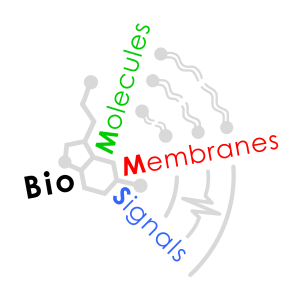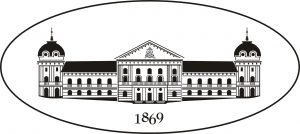The Institute of Biophysics and Biomedical Engineering was established in 2010 through the merger of the Institute of Biophysics at the BAS and the Central Laboratory of Biomedical Engineering “Prof. Ivan Daskalov” as their universal successor.
The former Institute of Biophysics was established in 1967 as the Central Laboratory of Biophysics and was transformed into an institute in 1994. The former Central Laboratory of Biomedical Engineering was established in 1994 and in 2004, in memory of its founder Prof. Ivan Daskalov, took his name.
The Director of IBPhBME is Prof. Tania Pencheva.
The Institute of Biophysics and Biomedical Engineering (IBPhBME) is a leading research institute in Bulgaria in the field of biophysics, biochemistry, biomedicine, chemoinformatics and bioinformatics, biomedical engineering. IBPhBME conducts scientific and scientific-applied research at a high scientific level in accordance with world scientific standards in the field of biomedicine and quality of life for the benefit of society and science and demonstrates successful technology transfer to other BAS institutes, universities, clinics and companies. IBPhBME is fully competitive and internationally recognizable, and the achievements of its scientific staff receive high international recognition.
The main scientific topics of IBPhBME are:
- Biophysical characterization of cells and cellular membranes
- Development and characterization of innovative biomimetic systems and nanomaterials
- Development of innovative approaches in the fields of biophysics, bioengineering, biomechanics, bioinformatics with application in biomedicine
- Development of mathematical and information tools with application in various fields of science and practice, including biology and medicine
The Institute has the following specialized scientific equipment:
| Specialized scientific equipment | Contact person |
|---|---|
| Spectrophotometers (Specord 50 Plus, 210 Plus) | Prof. Anelia Dobrikova (aneli@bio21.bas.bg) Prof. Sashka Krumova (sashka.b.krumova@gmail.com) |
| Spectrofluorometers (HITACHI, JASCO) | Prof. Anelia Dobrikova (aneli@bio21.bas.bg) Prof. Galya Staneva (g_staneva@yahoo.com) |
| Refrigerated centrifuges (К23, К24, Sigma) | Prof. Anelia Dobrikova (aneli@bio21.bas.bg) Prof. Galya Staneva (g_staneva@yahoo.com) Prof. Sashka Krumova (sashka.b.krumova@gmail.com) |
| Freeze dryer | Prof. Sashka Krumova (sashka.b.krumova@gmail.com) |
| Cell culture laboratories | Prof. Rumyana Tsoneva (tzoneva@bio21.bas.bg) Prof. Bilyana Nikolova (nikolova@bio21.bas.bg) |
| Gas chromatograph | Prof. Galya Staneva (g_staneva@yahoo.com) |
| Luminometer | Prof. Galya Staneva (g_staneva@yahoo.com) |
| Automated system for registration and analysis of microscopic images | Prof. Bilyana Nikolova (nikolova@bio21.bas.bg) |
| Inverted microscopes with camera | Prof. Bilyana Nikolova (nikolova@bio21.bas.bg) |
| Inverted fluorescence microscope Zeiss 135 with microinjection system | Prof. Galya Staneva (g_staneva@yahoo.com) |
| Microscope Nikon Eclipse T/2 9 (phase contrast and fluorescence) | Prof. Galya Staneva (g_staneva@yahoo.com) |
| TECAN (INFINITE M PLEX), absorption, fluorescence and luminescence in 96-well plates | Prof. Galya Staneva (g_staneva@yahoo.com) |
| Flow citometer SYSMEX with cell sorter | Prof. Galya Staneva (g_staneva@yahoo.com) |
| Surface plasmon resonance | Prof. Galya Staneva (g_staneva@yahoo.com) |
| Quartz Crystal Microbalance (Q-sense) Biolin Scientific | Prof. Galya Staneva (g_staneva@yahoo.com) |
| Zetasizer Nano (Malvern Instruments) | Prof. Galya Staneva (g_staneva@yahoo.com) |
| HPLC with fluorescence detector | Prof. Galya Staneva (g_staneva@yahoo.com) |
| High precision differential scanning microcalorimeters (ДАСМ 1, ДАСМ 4) | Prof. Svetla Todinova (todinova@abv.bg) |
| Conductometer HANSATECH | Prof. Sashka Krumova (sashka.b.krumova@gmail.com) |
| Plate reader | Prof. Rumyana Tsoneva (tzoneva@bio21.bas.bg) |
| HPLC for amino acids determination (Asp, Glu, GABA) after in vivo brain microdialysis | Prof. Rumyana Tsoneva (tzoneva@bio21.bas.bg) |
| Polarographic electrode for oxygen evolution (type Joliot and Clark) | Prof. Anelia Dobrikova (aneli@bio21.bas.bg) |
| PAМ fluorometer | Prof. Anelia Dobrikova (aneli@bio21.bas.bg) |
| Handy PEA fluorimeter (JIP test) | Prof. Anelia Dobrikova (aneli@bio21.bas.bg) |
| Electromyography instruments | Assoc. Prof. Simeon Ribagin (simribagin@gmail.com) |
| 3D printer | Assoc. Prof. Simeon Ribagin (simribagin@gmail.com) |
| Computerized stations with the ability to analyze the bioelectric cardiac signal from various electrocardiographic lead systems | Prof. Vessela Krasteva (vessika@biomed.bas.bg) |
| Specialized hardware for the purpose of in silico modeling of biologically active compounds: 8 workstations configured to work in a computing mini-cluster, 2 file servers, GP-GPU computing node, 1 Gb | Prof. Ivanka Tsakovska (itsakovska@biomed.bas.bg) |






